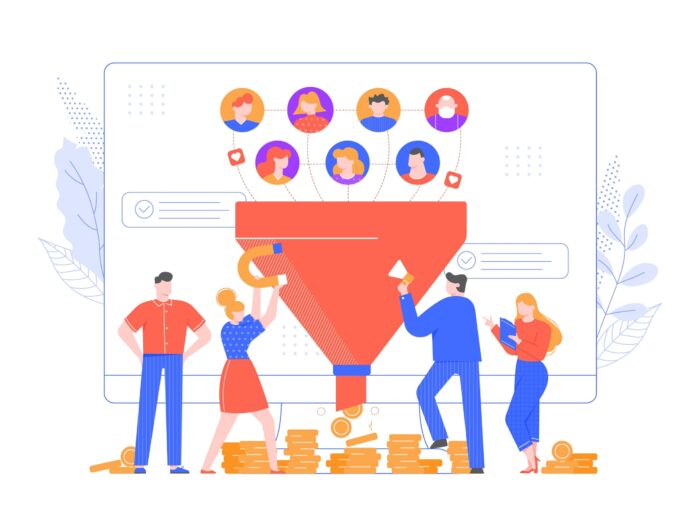Lead generation has been one of the biggest challenges for B2B companies, even in the age of advanced marketing automation. Most marketers find it hard to capture qualified prospects that will actually convert into paying customers.
It’s no rocket science really. You need to connect with decision-makers who are actively looking for solutions that your service or product can solve. If you are failing to generate consistent quality leads, you need to rethink the lead generation model for your business.
While cold emailing and social media advertising are great methods on their own, they are losing effectiveness as competition intensifies. Today’s B2B prospects become more selective about what they engage with.
So, if you are not combining data-driven methodologies and artificial intelligence to enhance your lead quantity and quality, you are missing out on serious opportunities. In this article, we will talk about six underrated strategies that most marketers are still not using, but you absolutely should.
- Contents hide
Act Before the Buyer Reaches Out
80% of B2B buyers don’t talk to vendors until they’re over halfway through their decision process. At that point, their minds are almost made up. By the time someone fills out your form, they’ve likely ruled out a few names already.
That’s why top-performing teams reverse-engineer intent. They track what pages are being viewed, which keywords are driving traffic, and who’s engaging with comparison content. Then they act fast. Reaching out early means you’re not just another option. You become the benchmark.
Use LinkedIn Differently Than Everyone Else
Most companies treat LinkedIn like a megaphone. They push out helpful posts and wait for people to notice. But 89% of B2B marketers already use LinkedIn for lead generation, and 62% say it gives better results than any other platform. That also means the feed is overcrowded. What helps you stand out is conversation, not content alone.
Personal comments, targeted outreach, and real back-and-forth in DMs outperform polished carousels. It’s not about growing followers. It’s about staying top-of-mind with buyers who matter.
Ask For Micro-Commitments, Not Demo Bookings
The jump from passive visitor to booked demo is too big. People aren’t ready. Instead, ask for small actions. A quick poll. A 60-second audit. A PDF checklist with zero friction. These low-stakes offers get buyers to engage without pressure.
And every click gives you a signal – what they care about, where they’re stuck, how fast they’re moving. Once you have those cues, following up feels natural. You’re not cold-calling anymore. You’re building on something they already raised their hand for.
Build Industry-Specific Lead Magnets
Generic lead magnets rarely convert well. Decision-makers don’t want a broad ebook titled “Marketing Tips for SaaS.” They want something that sounds like it was made just for them. Narrow the scope. Create one-pagers, calculators, or templates that solve a clear issue for a specific vertical.
“Budget Tracker for EdTech CMOs” will get better results than “Q2 Budget Planner.” Personalization here isn’t about name tags. It’s about relevance. When something speaks their language, people stop scrolling. They click, save, and share.
Repurpose Testimonials Into First-Touch Messages
Buyers don’t care about feature lists at first. They care about proof. But most marketers leave that proof sitting on the website. Instead, turn it into conversation starters.
Open your outreach with a story: “A fintech lead told us last week they cut onboarding time by 30% after switching.” Fluff-free, result-focused.
These short, specific wins lower resistance. They give context. And they show you’re already helping companies like theirs. When people see themselves in your message, they reply.
Target Companies During Funding Rounds
The majority of marketers chase companies when they’re stable. But the real opportunity is when they’re in transition. Companies that just raised capital or secured new funding are actively looking to scale. They have a budget. They have urgency.
They need solutions now. Track funding announcements, new executive hires, or expansion news. Then reach out with timing-specific value: “Congrats on the Series B. We’ve helped three other companies in your space scale their ops after similar rounds.” You’re not interrupting their workflow. You’re offering help exactly when they need it most.
Leverage Employee Advocacy Beyond Sales Teams
Your best lead generators aren’t always in sales or marketing. They’re your engineers, customer success managers, and product specialists. These people have authentic relationships in the industry. When they share insights or engage in technical discussions, prospects listen differently.
Build a lightweight advocacy program. Give non-sales employees easy ways to share valuable content or participate in industry conversations. A developer sharing a technical solution carries more weight than a salesperson pushing the same message. Prospects see it as peer advice, not a pitch.
Common Lead Generation Mistakes That Stagnate Conversion
Even the best strategies fall flat if you’re making fundamental errors that prospects can spot from miles away. Most B2B teams focus so heavily on volume that they forget the basics of buyer psychology. Here are the silent conversion killers that might be sabotaging your efforts without you realizing it.
- Asking Too Many Questions Upfront – Long forms with 15+ fields feel like interrogations. Buyers abandon them. Start with just a name and email. Progressive profiling works better than overwhelming gates.
- Generic Follow-Up Sequences – “Just checking in” emails get deleted. Reference specific pages they visited, content they downloaded, or problems they mentioned. Context beats persistence every time.
- Focusing on Features Instead of Outcomes – Decision-makers don’t care about your 47 integrations. They care about cutting costs, saving time, or reducing risk. Lead with business impact, not technical specs.
- Ignoring Mobile Experience – 60% of B2B buyers research on mobile devices. If your landing pages or forms break on phones, you’re losing qualified leads before they even engage.
- Treating All Leads the Same – A startup founder has different priorities than an enterprise VP. Segment your approach based on company size, industry, and role. One-size-fits-all messaging converts poorly.
Final Thoughts
Lead generation stops being a numbers game when you start treating prospects like real people with actual problems.
The companies winning today aren’t the ones with the biggest marketing budgets or the fanciest automation tools. They’re the ones building genuine relationships and providing value before asking for anything in return. Stop chasing leads and start attracting them naturally.


